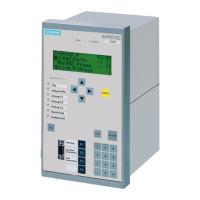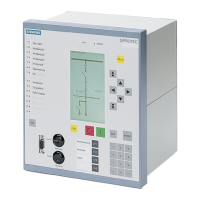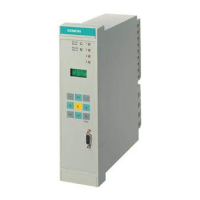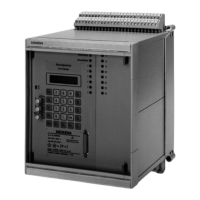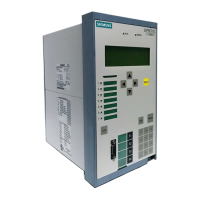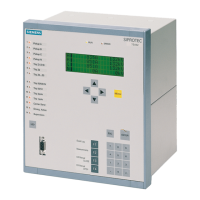2 Functions
232
7SD610 Manual
C53000-G1176-C145-4
Reclosure
Interlocking
When tripping the circuit breaker by a protection function the manual reclosure must
often be blocked until the cause for the protection function operation is found. 7SD610
enables this via the integrated reclosure interlocking.
The interlocking state („LOCKOUT“) will be realized by an RS flipflop which is protect-
ed against auxiliary voltage failure (see Figure 2-101). The RS flipflop is set via binary
input „>Lockout SET“ (no. 385). With the output alarm „LOCKOUT“ (no. 530), if in-
terconnected correspondingly, a reclosure of the circuit breaker (e.g. for automatic re-
closure, manual close signal, synchronization, closing via control) can be blocked.
Only once the cause for the protection operation is known, should the interlocking be
reset by a manual reset via binary input „>Lockout RESET“ (no. 386).
Figure 2-101 Reclosure Interlocking
Conditions which cause reclosure interlocking and control commands which have to
be interlocked can be set individually. The two inputs and the output can be wired via
the correspondingly allocated binary inputs and outputs or be linked via user-defined
logic functions (CFC).
If, for example, each trip by the protection function has to cause a closing lockout, then
combine the trip command „Relay TRIP“ (no. 511) with the interlocking input
„>Lockout SET“. If automatic reclosure is applied, only the final trip of the protection
function should activate reclosing lockout. Please bear in mind that the message
„Definitive TRIP“ (no. 536) applies only for 500 ms. Then combine the output
indication „Definitive TRIP“ (no. 536) with the interlocking input „>Lockout
SET“, so that the interlocking function is not established when an automatic reclosure
is still expected to come.
In the most simple case, the output indication „LOCKOUT“ (No. 530) can be allocated
to the output which trips the circuit breaker without creating further links. Then the trip
command is maintained until the interlock is reset via the reset input. Naturally it has
to be ensured in advance that the close coil at the circuit breaker — as is usually done
— is blocked as long as a trip command is maintained.
The output indication „LOCKOUT“ can also be applied to interlock certain closing com-
mands (externally or via CFC), e.g. by combining the output alarm with the binary input
„>Blk Man. Close“ (no. 357) or by connecting the inverted alarm with the bay in-
terlocking of the feeder.
The reset input „>Lockout RESET“ (no. 386) resets the interlocking state. This input
is initiated by an external device which is protected against unauthorized or uninten-
tional operation. The interlocking state can also be controlled by internal sources using
CFC, e.g. a function key, operation of the device or using DIGSI on a PC.
For each case please make sure that the corresponding logical combinations, security
measures, etc. are taken into account for the routing of the binary inputs and outputs
and are also considered for the setting of user-defined logic functions, if necessary.
See also the SIPROTEC 4 System Description.
Breaker Tripping
Alarm Suppression
While on feeders without automatic reclosure every trip command by a protection
function is final, it is desirable, when using automatic reclosure, to prevent the opera-
www . ElectricalPartManuals . com
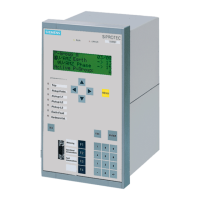
